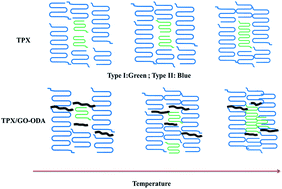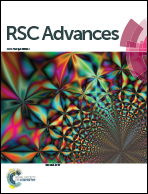Isothermal crystallization process of poly(4-methyl-1-pentene)/alkylated graphene oxide nanocomposites: thermal analysis and rheology study
Abstract
In this study, alkylated graphene oxide (GO–ODA) was obtained successfully via electrostatic self-assembling of oppositely charged GO and ODA. Then, TPX/GO–ODA nanocomposites were obtained from the solution. All samples have the same crystal structure, Form I, as found by X-ray diffraction (XRD). It can be noted that poly(4-methyl-1-pentene) (TPX) has two types of lamellae at high crystallization temperatures, as found by differential scanning calorimetry (DSC). The higher the crystallization temperature, the slower crystallization occurs; however, the nanofiller GO–ODA has the great advantage of accelerating crystallization. At the same time, the added GO–ODA, as a nucleating agent, improves the appearance temperature of the Type II lamellae. Moreover, space for crystal growth is limited by the structure of GO–ODA. In rheological experiments, when the frequency was higher than a critical value, crystallization was no longer affected by the frequency. In this study, exploring such interplay between the crystallization behavior and rheology of crystallization could guide the choice of polymers in practical applications and processing.


 Please wait while we load your content...
Please wait while we load your content...